Florida Low-Chill Olive Research Project
In 2017, Hardee County, Florida Olive Council and UF-IFAS Horticulture Department launched a program to discover or develop an olive cultivar that will reliably bloom and fruit south of the I-4 corridor. Olive fruiting is often dependent upon the olive tree receiving sufficient chill during winter to enable flowering in the spring. Olives currently cultivated in Florida are drawn from European stocks (Spain, Greece, Italy, etc.). These cultivars are acclimated for vernalization (enable bloom and fruiting) using 200-300+ chill hours*. In the graphic (Fig. 1) south central Florida (Hardee County in red rectangle) receives only 110-210 annual chill hours. * 1 chill hour = 1 hour between 32 and 45 degrees F.
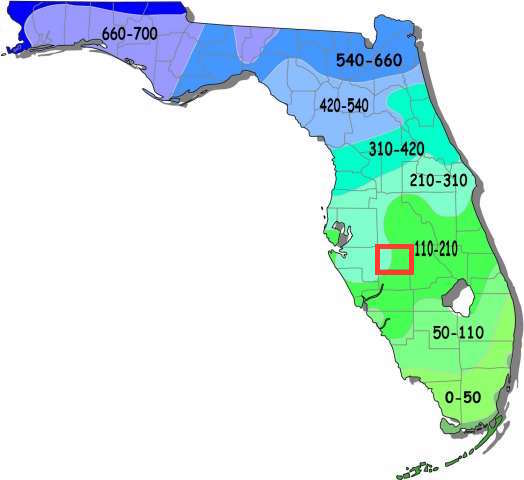
Fig 1.
Hypothesis
Over the millennia, the olive tree has adapted to various environments, from the high mountains to Turkey to the low valleys along the northern Italian coast. Scholars suggest early olives were small fruit harvested from desert trees in the vicinity of the Fertile Crescent (area between Iran and Iraq). As olives were domesticated (they are the oldest known cultivated crop) they were selectively bred to produce various sizes and flavors. As the olive trade expanded olive trees were transported from Crete to many areas of the Mediterranean by Phoenician traders. As olives were introduced to different climates and soils, they cross pollinated, were grafted and grown from seed in order to gain a desired size and/or fruit-oil quality in the new environment. There are over 2000 olive varieties in the world. They grow on every continent except the Poles. Researchers postulate that olive cultivars from latitudes similar to Florida’s might achieve vernalization using fewer chill hours. If successful developing an olive cultivar that will reliably fruit south of Florida’s I-4 corridor will offer Florida farmers, particularly citrus growers, another profit option.
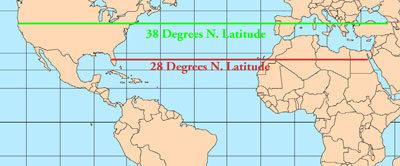
Latitude Comparison
Research Design
The basic research design was to select cultivars originating in the Middle East, North Africa and South America and a.) graft them onto existing mature (4+ year old) cv. Arbequina; and b.) root same cultivars to provide mother trees for successful grafts. Since olive trees may take 3-7 years to mature, cuttings of candidate cultivars grafted onto trees capable of flowering may enable early detection of promising cultivars. As these cultivars are identified from the grafting process mother trees from the rooting component of the research project conducted at the Florida Olive Council Research Facility in La Crosse, FL will be planted at the Hardee and other research sites.
Results to Date
2017 – Twenty-seven (27) varieties, primarily from North Africa and South America, were were secured from the USDA olive germ plasm facility at University of California (Davis). The specimens were grafted onto mature (4+ years) Arbequina and Koroneiki stumps at Hardee County Research Facility (Wauchula). In addition, an identical sample of trees was rooted at Florida Olive Research Facility near LaCrosse, FL. Hurricane Irma destroyed most of the grafts and the rooting component of the experiment. Few grafts survived the storm and less than 10 cuttings survived in the rooting facility.
2018 – Forty (40) varieties from North Africa, Middle East, South America, Australia and The Levant were secured from the USDA germ plasm at University of California (Davis). Lessons-learned from the 2017 experiment were applied and the material was then grafted and rooted following an amended protocol. The grafting experiment, in particular, was improved significantly by selecting larger diameter cuttings. The trees were “budded” much in the same manner as citrus trees and many more grafts “took” than in 2017. By 01 July 2018, three hundred and seventy-one (371) grafts were set and 360 cuttings rooted.
2019 – Of 371 original grafts, approximately 75% are vital with new growth. Of the rooting, while 90% of the cultivars are represented, in several cases only one or two individual plants survived. As USDA staff indicated (and we have learned), some olive cultivars are notoriously difficult to root. The researchers are reaching out to more organizations to expand knowledge of rooting particular cultivars and exploring the possibility of a micro propagation process.
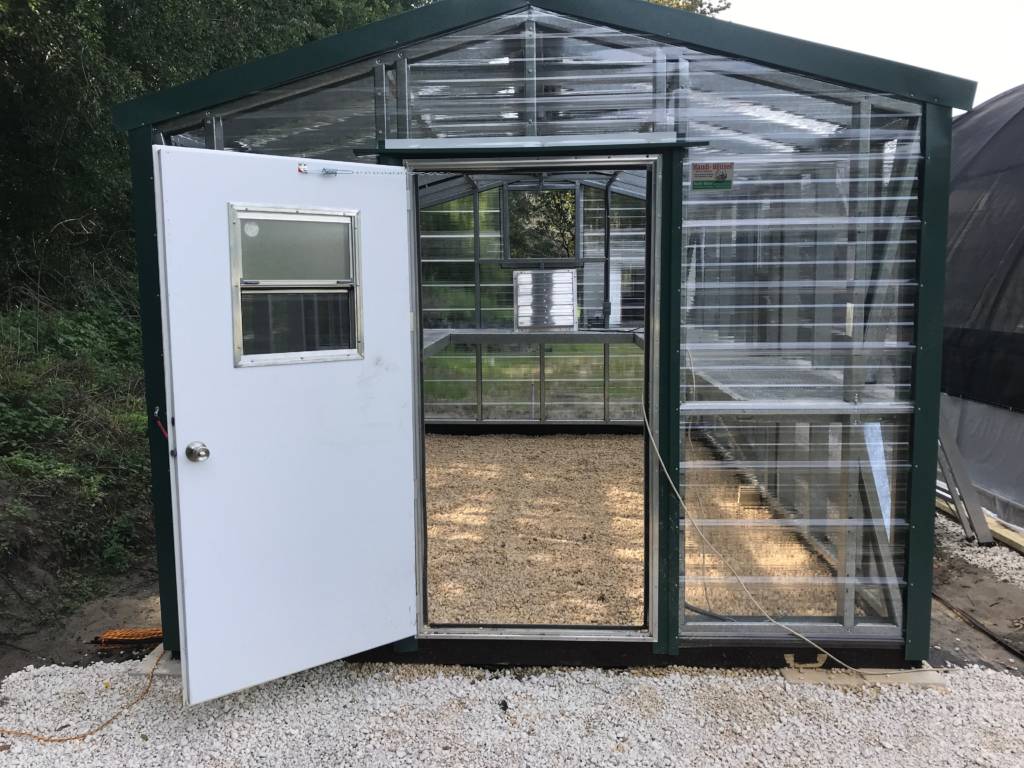
New Root House at FOC Research Facility
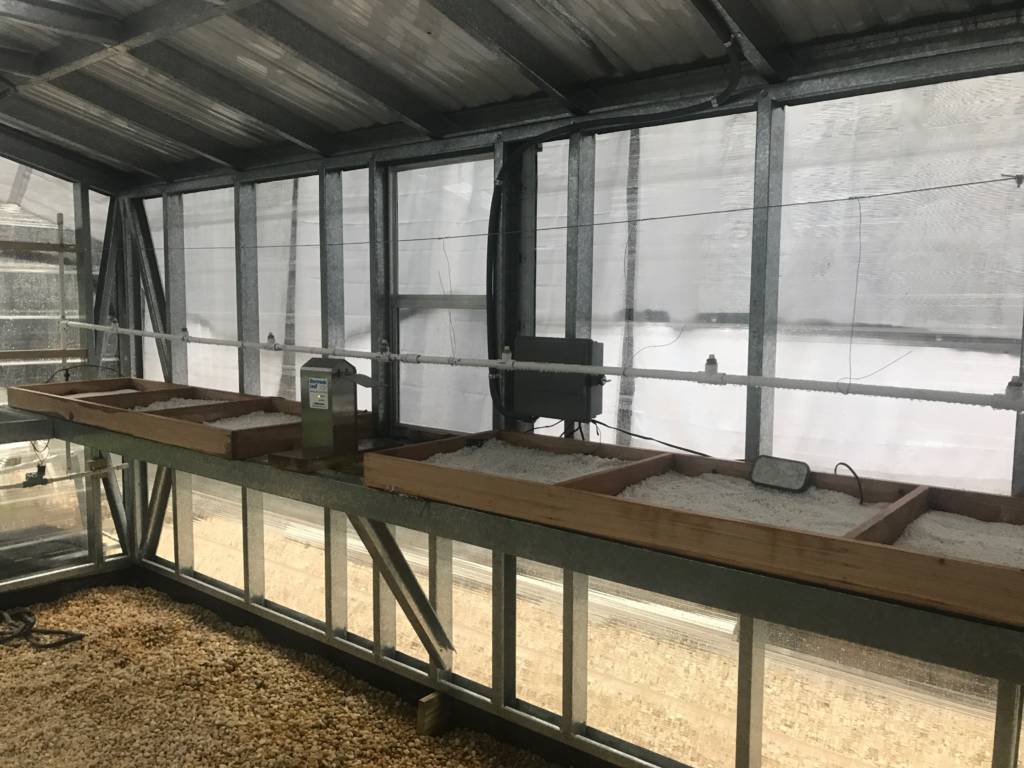
Inside New FOC Rooting House
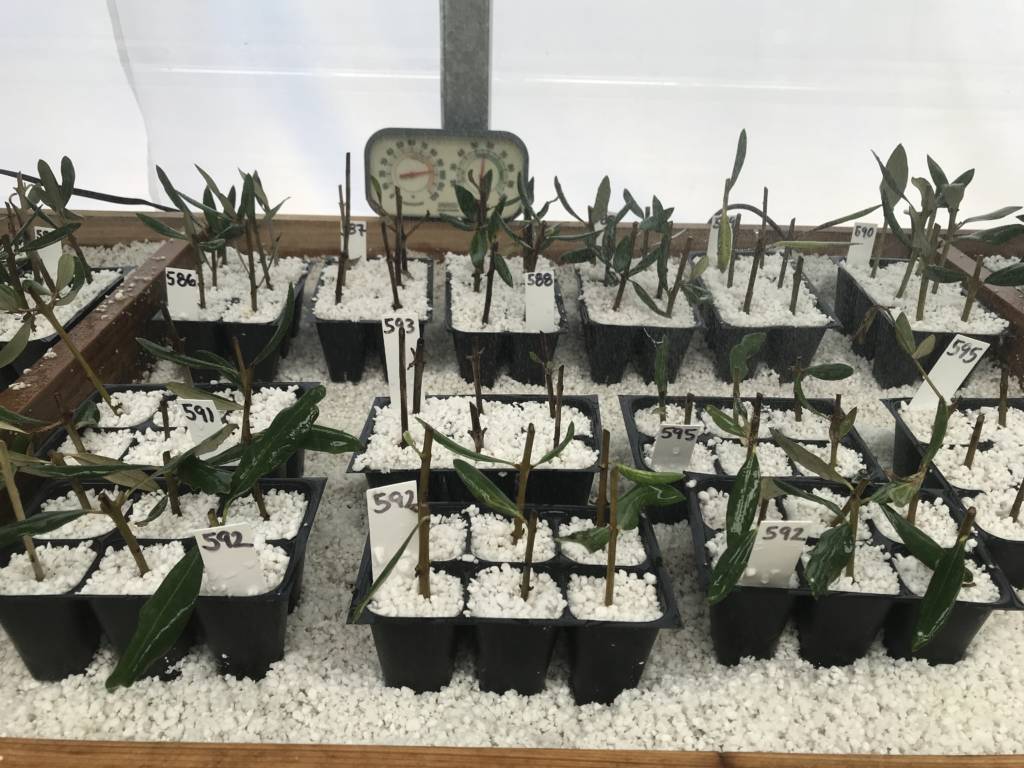
Fig. 2 2018 Rooting at FOC Research Facility
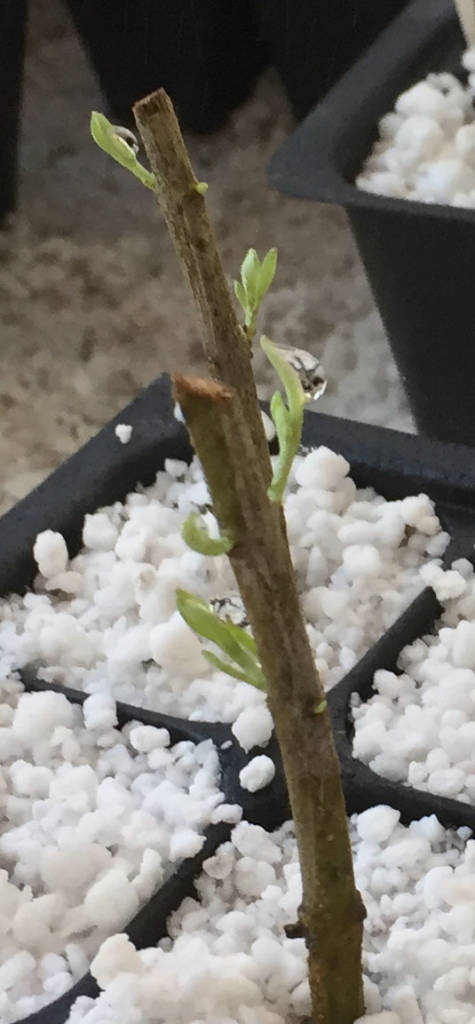
Fig 4. New Growth
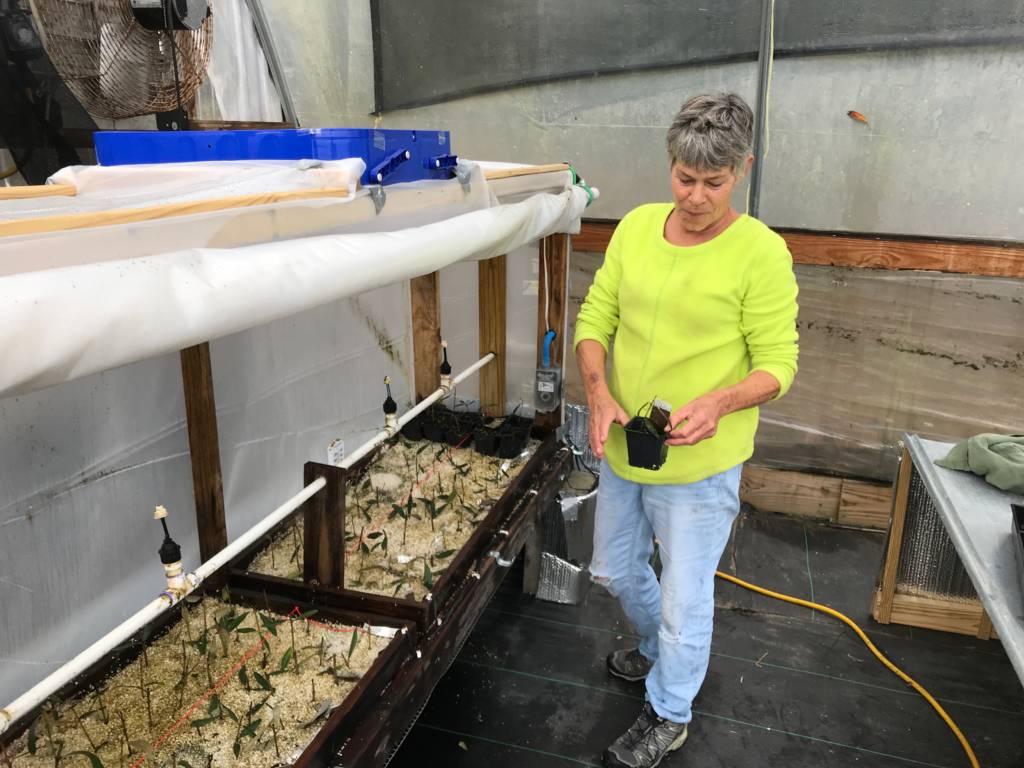
Fig. 3 FOC Root House manager Jan Neller Gray works with 2017 cuttings
